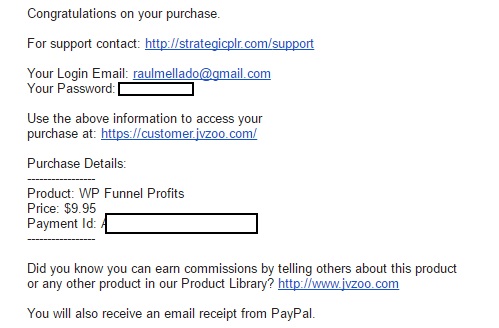For the past months (I’d say since I started writing to my e-mail list and working on this blog), I’ve been getting questions from people who would like to have a successful online business, but don’t know where to start.
Some people are looking to quit their jobs; some are just looking for an extra income source.
It’s hard to give just one piece of advice, since there are a few moving parts involved, but I’m going to try to simplify here, so I’ll say you just need 3 things:
- The proper mindset
- A (hungry, if possible) market where there is money to be made
- The technical aspect
From that short list, number #2 is probably the easiest to grasp: you need buyers, who are interested in what you are selling (be it your own product, an affiliate product or maybe just your website where you have ads).
Number #1 (mindset) is simple but not easy (never confuse those concepts): you need to believe in yourself, be confident in your abilities and be ready to fail (often). If I had to pick one thing, it would be the ability to keep moving forward even when you can’t see any progress.
In this post I’d like to talk about the technical part, but just the basics, for anyone who just wants to set up a website and set up a product for sale (again, it can be your own product or an affiliate product; if it’s your product there are a couple of extra steps, but not that much actually).
I’m going to assume you are going to sell your own product for this example. If that is the case you will just need:
- A website (WordPress is your best friend), for your sales page and deliver the product.
- A payment processor (ie, a way to collect people’s money)
- An autoresponder (a way to collecte people’s email address and contact them, to follow up with promotions, etc)
That’s all!
And actually, you don’t really need the autoresponder (but it’s highly recommended), so just 2 things 🙂
Once you have mastered those 3 you can expand and use stuff like Social Media (Facebook, Twitter, Youtube), paid traffic, SEO… to get extra exposure/traffic, but you take this as a bonus; you will need to have your offer first.
Can you see what I’m doing here? I’m breaking the whole process in small, manageable steps, so it’s not so scary any more, even when you are a real beginner.
If you have never built a WordPress website, here you can learn how to go from no hosting/no domain/no website to a full website in 8 minutes (in the 1st video)
For a Payment processor, you can use a very simple one like JVZoo, which is seller and affiliate friendly. When you add your product, you just need the following things:
- The product name
- The price
- The delivery url (the url where your users will go to get access to your product).
After you create the product, you get a button (html code) that you need to place in your website for people to purchase.
And finally for an Autoresponder, if you are just getting started, Mailchimp is free in its very basic version (once you start getting some success, you’ll want to upgrade to the paid version or switch company for advanced features).
Obviously, each step can have a few sub-steps, and you can make the process as complex as you want (you might also want to build a membership site, where members pay you a certain amount on a monthly basis to be a member – that’s my favourite revenue model, by the way).
In future blog posts I’ll expand on every step so you can get more information, but I’m keeping this post short on purpose, so you just get a general overview (but this is the whole picture, there is not much more than this).
Also, if you would like some step-by-step, newbie friendly training on all the steps (the training is not mine, but gets my full thumbs up), check out my review of Kevin Fahey’s IM Newbie here.

 Follow
Follow